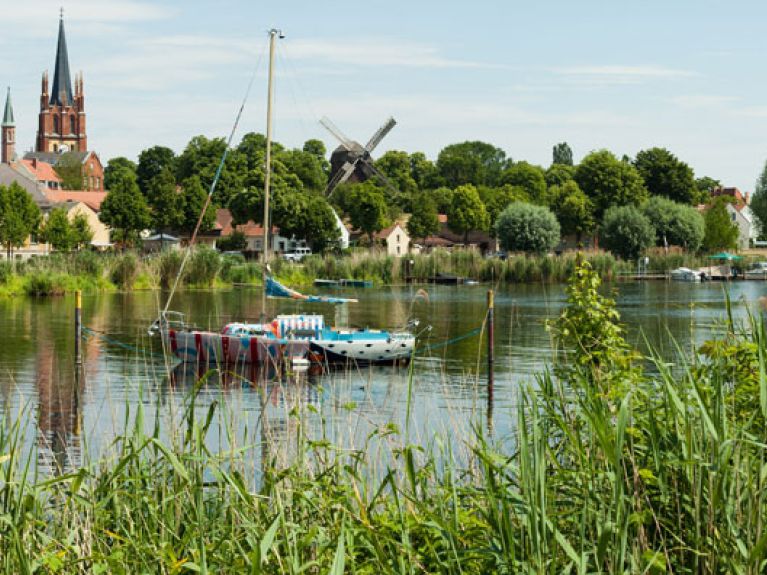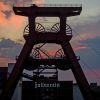Havelland – Yearning for nature
Picturesque towns, cultural landscapes like Potsdam with its palaces, forests and waterways characterise the Havelland region. A journey of discovery just outside the gates of Berlin.

The Havelland is known far beyond its borders thanks to the poet Theodor Fontane. The writer, who was born in Neuruppin in 1819, dedicated an entire volume to the region in his famous “Wanderungen durch die Mark Brandenburg” (Walks through the March of Brandenburg). That was because the author of “Effi Briest” considered the Havelland the cradle of the March of Brandenburg, indeed even of Prussia. Albert the Bear recaptured Brennaburg, later named Brandenburg, from the Slavs in 1157 and founded the March of the same name.
The Havel, a tributary branching off to the right of the River Elbe and just 334 kilometres in length, is not really all that spectacular. Coming from the Mecklenburg Lake District, it meanders its way southwards towards Berlin before winding round in the incredible arc in which the Havelland is embedded. The cradle of Brandenburg is therefore also the shape of a cradle drawn by this river.
The Havelland is a Brandenburg Arcadia, featuring among other things the palaces and gardens of Potsdam – now a UNESCO World Heritage Site. The Prussian King Frederick William II turned the Havel landscape near Berlin into a “landscape of yearning”, describing Pfaueninsel – Peacock Island – for example as his “personal Tahiti”. Then there is Paretz, the village to which the King’s successor, Frederick William III, liked to retreat with his wife Luise in order to lead a supposedly “ordinary” life far from the constraints of his royal duties. Luise, Prussia’s Queen of Hearts, has made the Paretz of today one of the most visited tourist magnets in Brandenburg. “The traveller, whose path takes him from Berlin to the west, (…) has at least at the beginning of his journey (…) to pass through a number of sections which he will not be reluctant to accept as oases.“ What sounds almost as if it were taken from a travel brochure is in fact the beginning of Fontane’s description of Werder, an island town on the Havel river which has preserved its charms to the present day. Especially in the spring, when the fruit trees are in blossom, thousands come to the town to celebrate the Tree Blossom Festival.
The Havelland is well known for its fruit trees. Ribbeck, another place which Fontane put on the literary and tourist map, is famous for pears. In his poem “Herr von Ribbeck auf Ribbeck im Havelland” (Squire von Ribbeck at Ribbeck Manor in the Havelland), Fontane describes a lord of the manor who always gave the village children some of his pears to eat. When he died, he had a pear placed in his grave with him. Herr von Ribbeck realised that his son was stingy, but a pear tree would soon bear fruit, ensuring the children continued to receive their pears.
Last but not least there is Havelberg, where the Havel surges up one last time and surrounds the hill in the old town, before being finally swallowed up into the waters of the River Elbe. It is towns like Havelberg and Werder, cultural landscapes like in Potsdam, as well as forests and waterways that characterise the Havelland countryside, where extensive river lowlands alternate with picturesque villages.
When talking about the provinces, people sometimes say somewhat disparagingly that Brandenburg should be glad to have a major city like Berlin at its heart. One could also take a different view: this is where a symbiosis between a metropolis and a region was able to evolve. The March of Brandenburg supplied Berlin with building materials, and Berlin supplied the March with tourists. All the same, this interaction only began less than 200 years ago. Previously, areas like the Havelland region were not considered beautiful but backward. Since the Romantic period, however, tourist itineraries have no longer been restricted merely to Italy, the Alps and the “Grand Tour”, but have also included excursions into nearby countryside. Fontane is responsible for ensuring that the Havelland region is one such area, as he opened people’s eyes to the beauty of the Havelland scenery. Which is still enjoyed to this day. ▪

